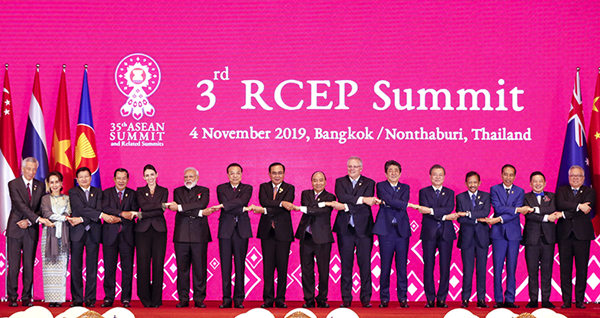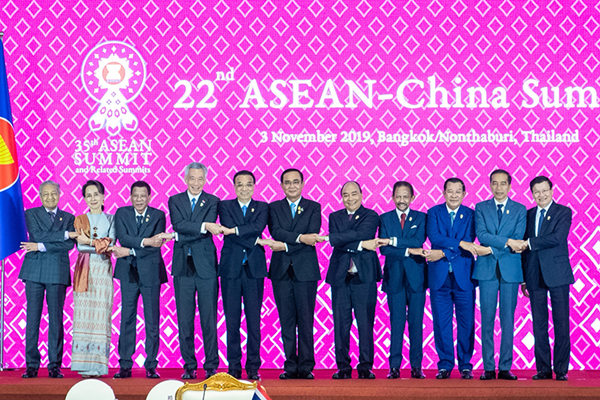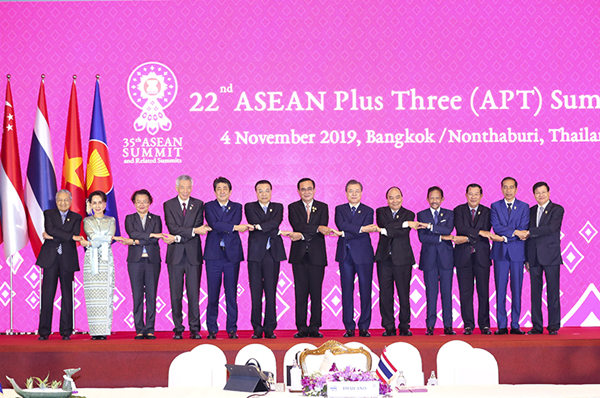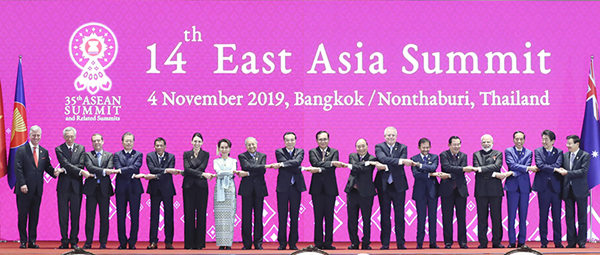A major breakthrough has been reached in the building of an East Asia free trade area, which would boast the largest population, most diversified membership and greatest potential for development, Premier Li Keqiang said at the 3rd Regional Comprehensive Economic Partnership (RCEP) Summit in Bangkok, Thailand, on Nov 4, according to China Business Network (CBN).
According to an official announcement at the summit, the 15 member states of the RCEP have concluded all text negotiations and essentially all market access negotiations. Member states of the Association of Southeast Asian Nations (ASEAN) spoke highly of China’s role in advancing the negotiations.

In a group photo at the summit, leaders of the 16 attending countries held hands, indicating a free trade link that powerfully and closely connects all of them. Through the posture of hand-holding, they also send a strong signal to the world of maintaining the rules-based multilateral trading system.
In addition, it means that the world’s largest free trade area, which covers 44 percent of global population, 40 percent of global trade and 30 percent of global GDP, is in sight.

Premier Li Keqiang and foreign leaders pose for a photo at the 22nd China-ASEAN (10+1) leaders' meeting in Bangkok, Thailand, Nov 3, 2019.
The image of agreement translates into win-win or all-win results for the countries involved, enabling them to combat the downward economic pressure by jointly safeguarding multilateralism.

Premier Li Keqiang and foreign leaders pose for a photo at the 22nd ASEAN-China, Japan and South Korea (10+3) leaders' meeting in Bangkok, Thailand, Nov 4, 2019.
The world is undergoing profound and complex changes. Facing the slowing economic growth and rising protectionism, the RCEP meeting offers the world both a strong signal and a practical example of upholding multilateralism.

Premier Li Keqiang and foreign leaders pose for a photo at the 14th East Asia Summit in Bangkok, Thailand, Nov 4, 2019.
By joining hands, leaders from the 16 countries display the universal mission of dispelling uncertainties and downward pressure across the world economy with cooperation and rules, to bring solid confidence and high expectations for the world economy.